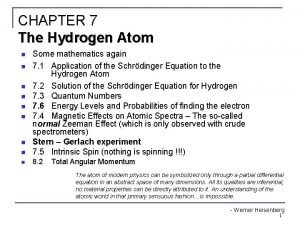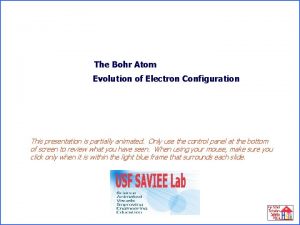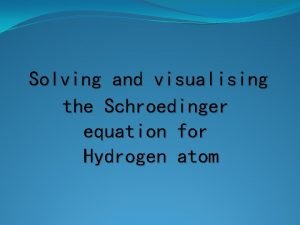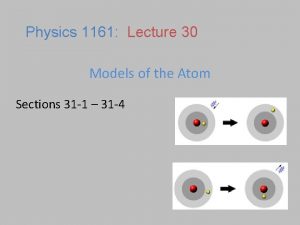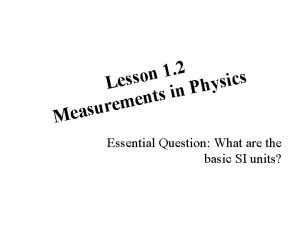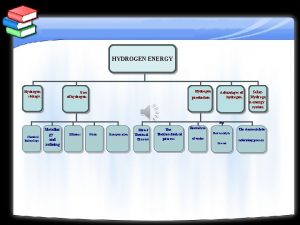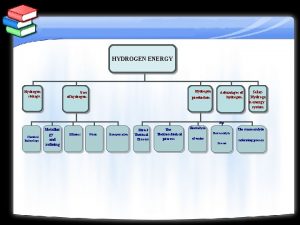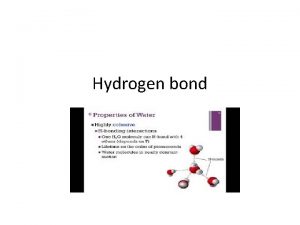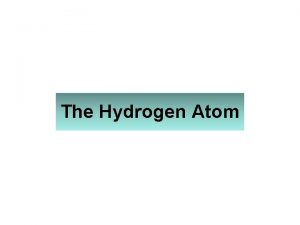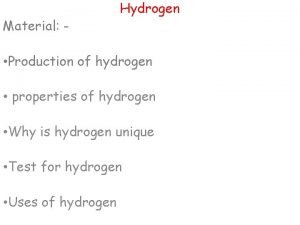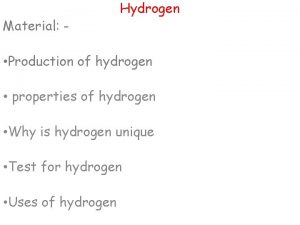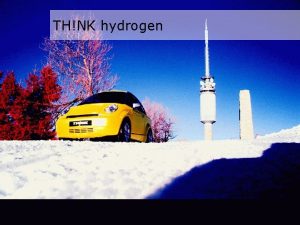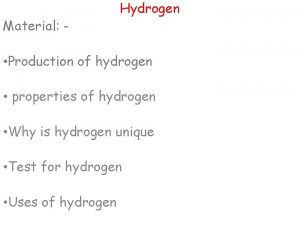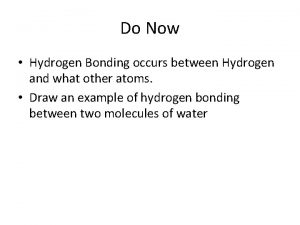Hydrogen Atom Returning now to the hydrogen atom

















- Slides: 17

Hydrogen Atom Ø Returning now to the hydrogen atom we have the radial equation left to solve Ø The solution to the radial equation is complicated and we must be content with the result 1

Hydrogen Atom Ø Comments n n The radial wave functions are listed and shown on the following slides The solution near r=0 is w This means the larger the l the smaller the probability of finding the electron close to the nucleus n The asymptotic solution is 2

Hydrogen Atom ØRadial wave functions 3

Hydrogen Atom ØRadial wave function and probability distribution 4

Hydrogen Atom Ø Comments 5

Hydrogen Atom ØProbability density function |ψnlm|2 6

Hydrogen Atom ØProblems n n What is the expectation value for r for the 1 s state? What is the most probable value for r for the 1 s state? 7

Hydrogen Atom Ø Comments n n n The quantum numbers associated with the radial wave function are n and l The quantum numbers associated with the angular wave function are l and m Boundary conditions on the solutions lead to 8

Hydrogen Atom Ø Comments n n n The energy eigenvalues for bound states are also found from the requirement that the radial wave function remain finite This is identical to the prediction of the Bohr model and in good agreement with data Note the eigenfunction degeneracy w For each n, there are n possible values of l w For each l, there are 2 l+1 possible values of m w For each n, there are n 2 degenerate eigenfunctions 9

Hydrogen Atom Ø The hydrogen wave functions can be used to calculate transition probabilities for the electron to change from one state to another Ø Selection rules governing allowed transitions are found to be 10

Hydrogen Atom Ø Hydrogen energy levels 11

Atoms in Magnetic Fields ØReturn to the Bohr atom 12

Atoms in Magnetic Fields 13

Atoms in Magnetic Fields Ø This relation holds true in quantum mechanics as well thus 14

Atoms in Magnetic Fields Ø Recall from E+M that when a magnetic dipole is placed in a magnetic field Ø We expect the operator for this potential energy to look like 15

Atoms in Magnetic Fields Ø Now we have shown that the ψnlm are simultaneous eigenfunctions of E, L 2, and LZ Ø Thus the additional term in the Hamiltonian only changes the energy Ø The m degeneracy of the hydrogen energy levels is lifted n n In an external magnetic field there will be m=2 l+1 states with distinct energies This is why m is called the magnetic quantum number 16

Hydrogen Atom ØNormal Zeeman effect 17
 Returning warrior workshop
Returning warrior workshop Land of the morning philippine national anthem lyrics
Land of the morning philippine national anthem lyrics Powerschool huntsville city schools
Powerschool huntsville city schools A value-returning function is
A value-returning function is Leaving returning it
Leaving returning it University of texas at tyler scholarships
University of texas at tyler scholarships I conclude then returning to being feared and loved
I conclude then returning to being feared and loved Returning back to god
Returning back to god Now i see it now you don't
Now i see it now you don't Hydrogen atom mouse
Hydrogen atom mouse Bohr radius of hydrogen atom
Bohr radius of hydrogen atom What is fine structure of hydrogen atom
What is fine structure of hydrogen atom Atom palm hydrogen
Atom palm hydrogen In bohr theory of hydrogen atom let r v
In bohr theory of hydrogen atom let r v Atom palm hydrogen
Atom palm hydrogen Solving schrodinger equation for hydrogen atom
Solving schrodinger equation for hydrogen atom Bohr radius of hydrogen atom
Bohr radius of hydrogen atom A human hair is approximately 50 μm in diameter
A human hair is approximately 50 μm in diameter











